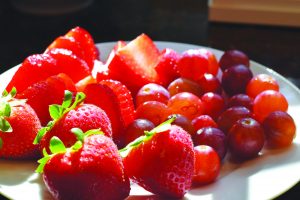Kids can benefit from healthy snacking habits
Published 6:45 am Wednesday, September 26, 2018

- public domain
You may hear this phrase as soon as your kids walk in the door after school or right before bedtime: “I’m hungry.”
Many times, this phrase means your kid wants a snack. Snacking is a good way to stave off cravings until the next meal. If done correctly, it can even help with weight management.
Kids need to eat every three to four hours, particularly if they are going through a growth spurt. This may explain your child’s after-school cravings. Younger children will want to snack more often because their stomachs are smaller. Younger kids should eat three meals a day and two snacks, while older children need to consume three meals a day and one snack for adequate nutrition. If they are very physically active or going through a growth spurt, older children may also need two snacks per day.
Remember, snacks are not meals and should not be served as meal replacements. Portion control is important for healthy snacking. Think of the size of snack-size storage bags compared to other sizes of storage bags. Remember — younger kids’ stomachs are smaller, so they will get full on smaller portions than will older kids.
Set aside a designated “snack zone” like a kitchen counter or dining room table for your children to eat their snack. Limiting where they can snack allows you to keep an eye on how much and what they are eating. And it helps you avoid finding crumbs and half-eaten food throughout your house.
Do not let them snack while watching television, as this encourages mindless eating. Try talking with your child while they eat. Talk about what they’re eating and involve all five senses. You could ask if the apple is crunchy or if the peanut butter is smooth. This encourages mindful eating.
Have healthy snack options readily available for your children. To help with busy weeks, you can portion out fruits, vegetables, nuts, raisins and other healthy foods in snack-size bags during the weekend. Place healthy snacks at your child’s eye level in the refrigerator where they can easily see them. Keep fresh fruit like bananas, apples, peaches and mandarin oranges visible on your counter. Placing these foods where children can see them will help your child choose healthy options compared to high-fat, high-sugar and empty-calorie snacks and drinks.
These tips can be used for the whole family. When healthier snack options are available, it’s easier to make healthier snack choices. Set a good example for your kids and eat the same nutritious snacks you provide for them to eat.
For more information on raising healthy children, contact the contact the agent for family and consumer sciences at the Boyle County Extension Office. Email me at a.price@uky.edu.






